Another day in Ushuaia, Argentina…. And another amazing weather day! We mention the weather because they somewhat describe their weather as we do in the Midwest, but on steroids. Their weather can literally change every hour, which isn’t surprising since they’re squished between the ocean and mountains. Rain was in the forecast, clouds were getting lower and lower, but by the end of the day it was clear enough that we could see every mountain around us. Breathtaking!
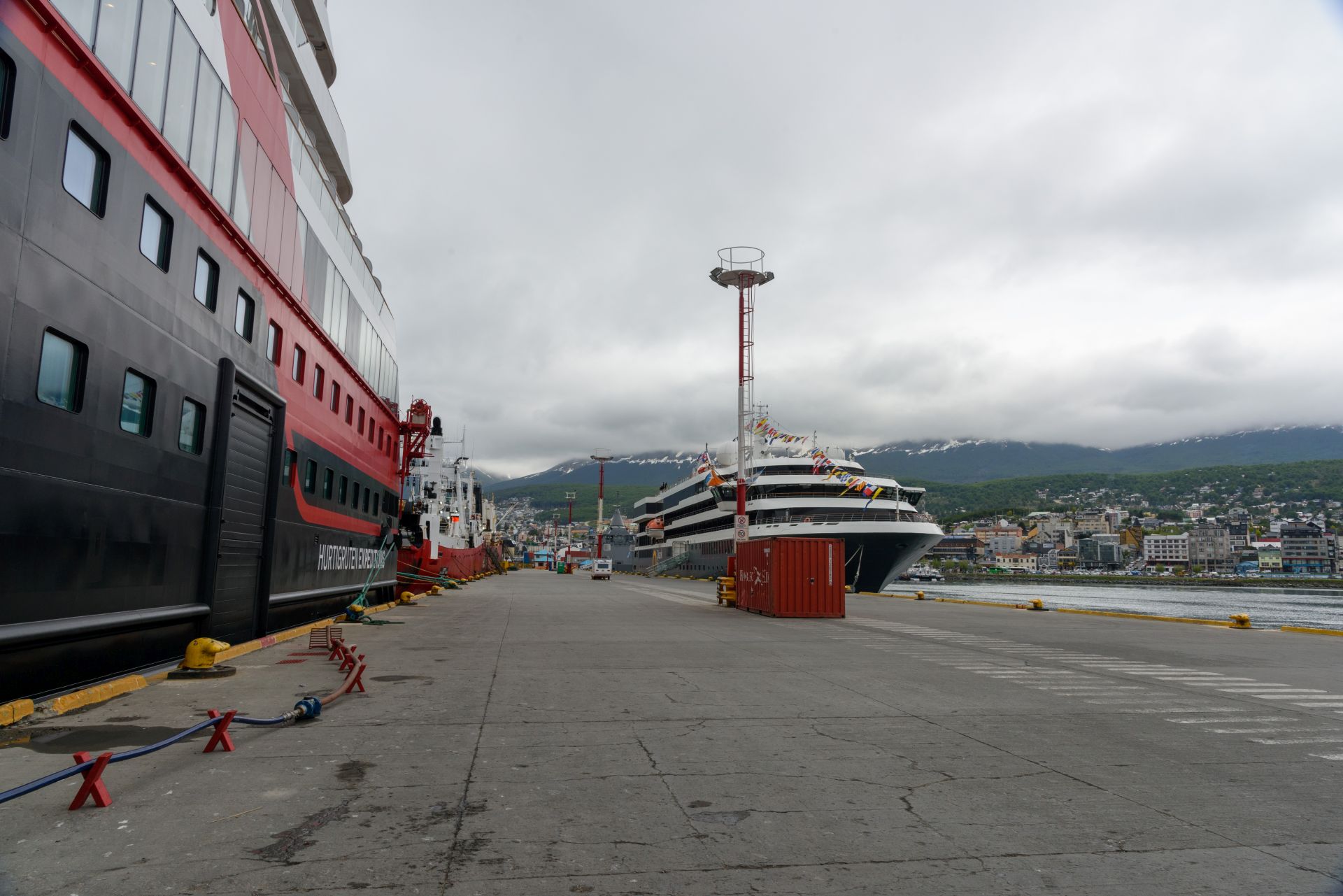
Today’s excursion was a walk about Ushuaia with one of the ship’s guides. The Leopard Seals were fortunate enough to be led by the ship’s historian, so our walk may have been a bit different than the other Seals. One of the first stops was at the harbor, to view a dilapidated wooden ship that appears that have run ashore many decades ago. The story is that the ship was American-built and used in both WWI and WWII. After that, it was used to try to salvage sunken ships from the bay/harbor. As the ship was aging, they decided to stop using it and dry-docked it. The historian mentioned that sadly it continues to deteriorate because the City won’t touch/maintain it, even though it has become one of the symbols of Ushuaia.
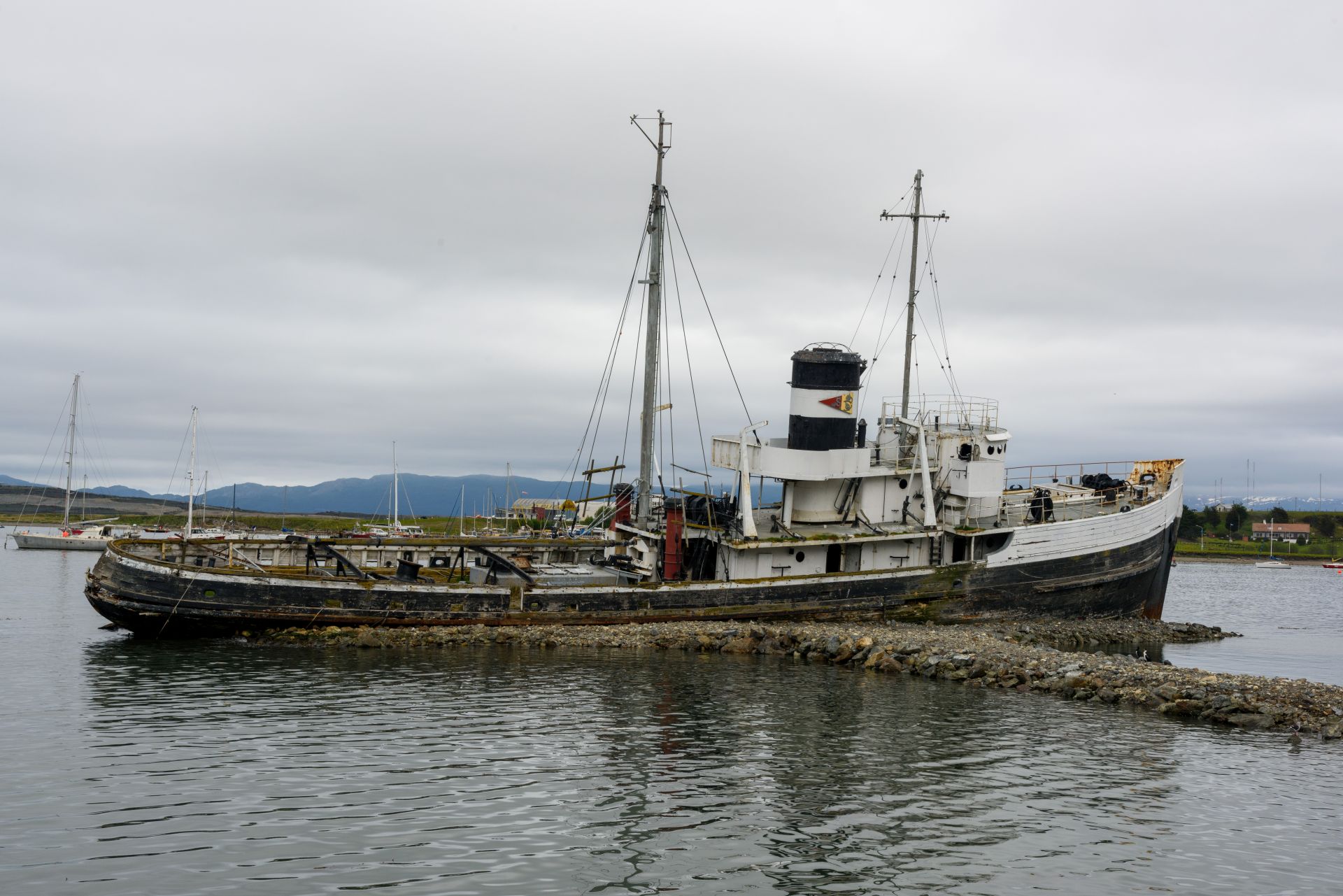
Another stop was a bit unexpected, as we noticed a Croatian flag flying high as well as a couple of signs that referenced Croatia. We were surprised to learn that a lot of Croatians migrated to Ushuaia in the late 19th century, some hoping to find gold. They did not strike gold, but they did settle in the area and continue to proudly call themselves Croatians or Argentinian Croats. There was additional backstory that had to do with the Austro-Hungarian regime, and the Croatians being left out of the kingdom, but we’ll spare everyone from that kind of in-depth history lesson!
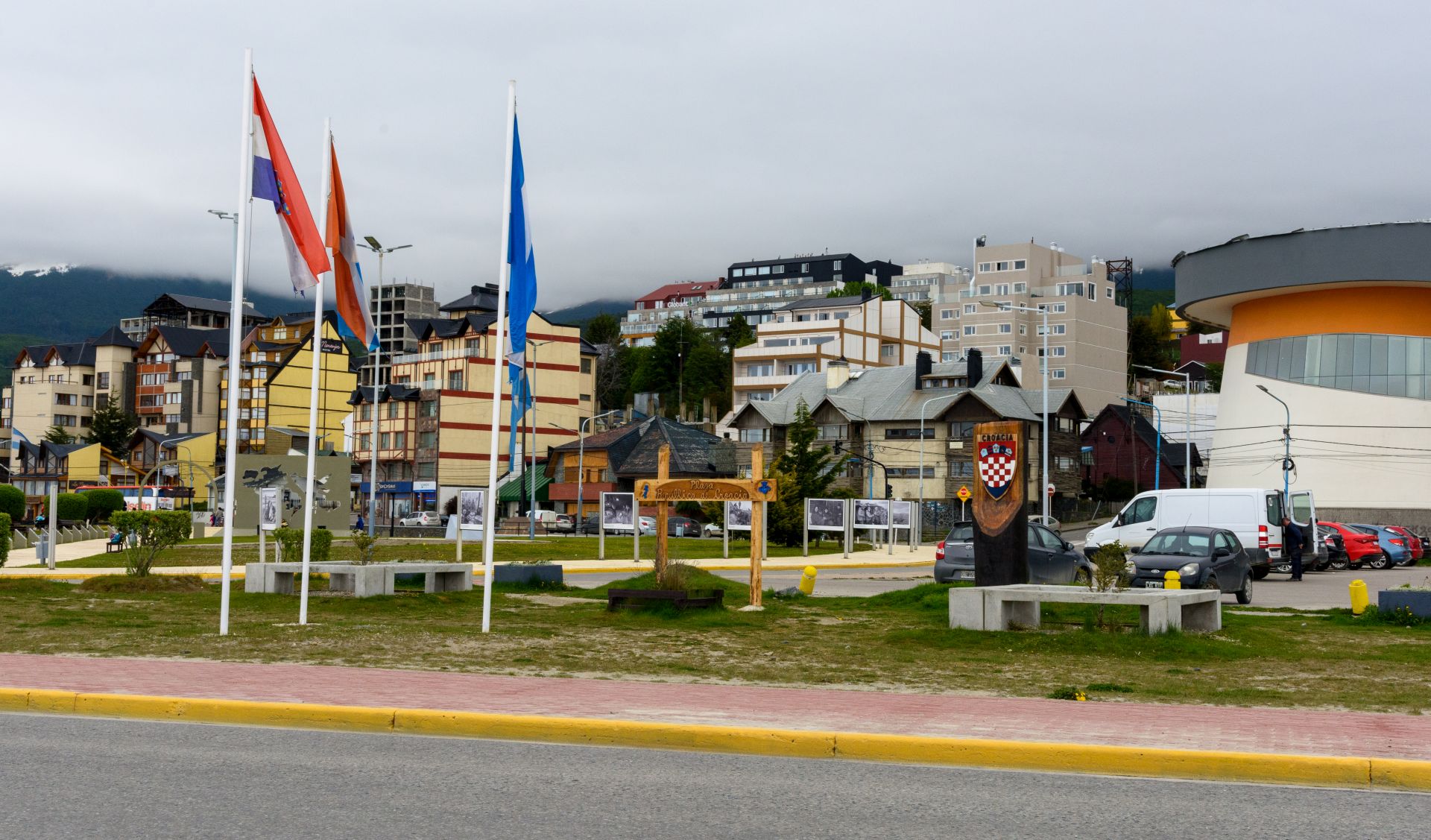
Across the street. Oh wait…crossing the street…. Before we left the dock, our guide said that it was important that we were aware that zebras (aka crosswalks) were not recognized by drivers and that traffic signals are sometimes a mere suggestion. So we successfully crossed the street to XXXXXXX park, dedicated to those who lost their lives in the Falkland War.
For those who are younger than us, we’ll give a super quick history lesson. In 1982, Argentina and the UK battled it out over the Falkland Islands, which are an extremely isolated set of islands east of Argentina. The war lasted about ten weeks, hundreds of lives were lost, and the islands remained under British control once all was said and done. The park is used mainly for events that relate to the war, or the memory of those lost during the conflict.
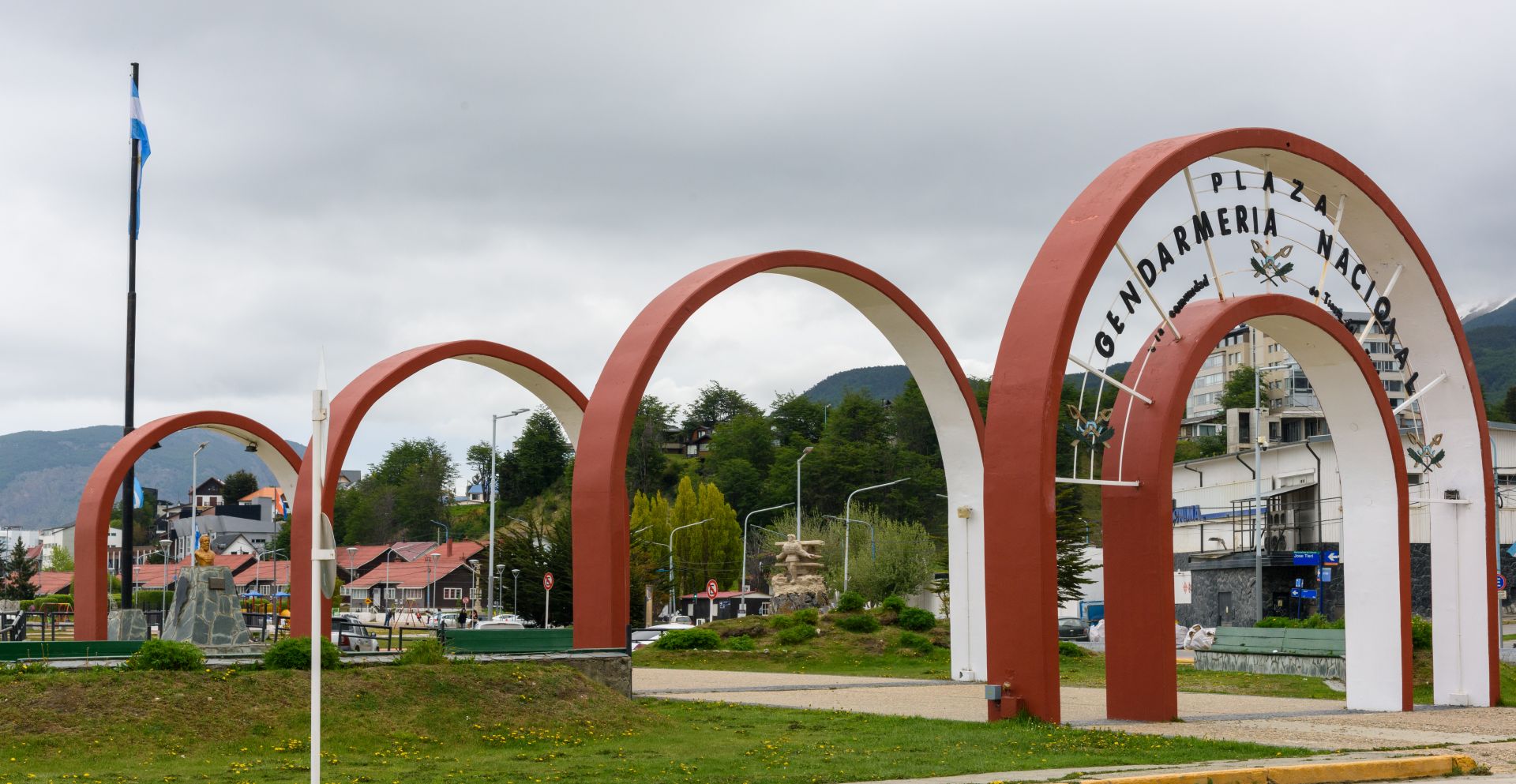
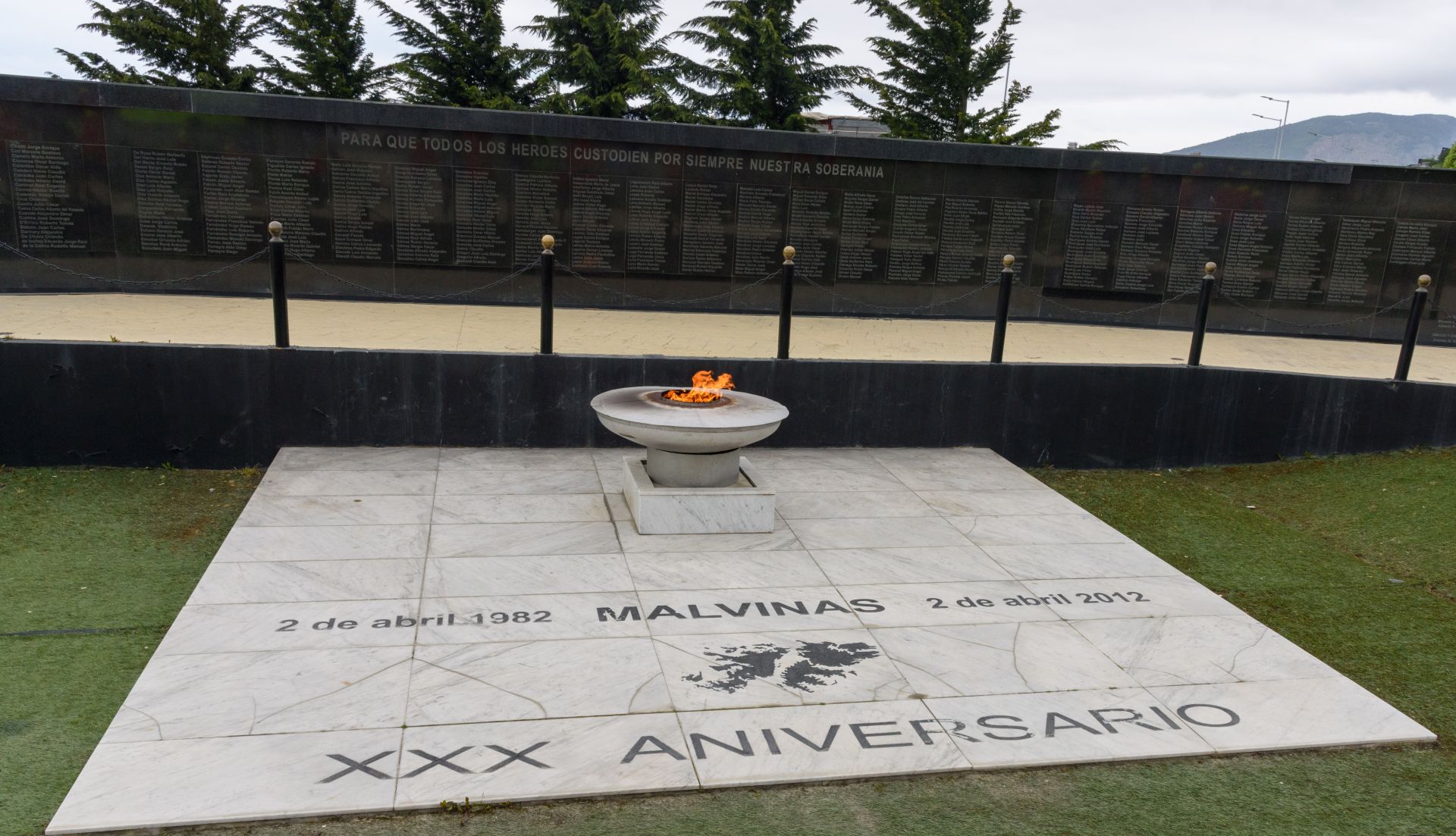
Crossing the street again. OHHHH my…. Cars weren’t stopping, as our guide had alluded would happen, so he aggressively started walking across the street. A not-so-happy-looking man in a pickup truck stopped for us, impatiently waiting for our group to cross. Everyone made it, the man continued down the road, all was well.
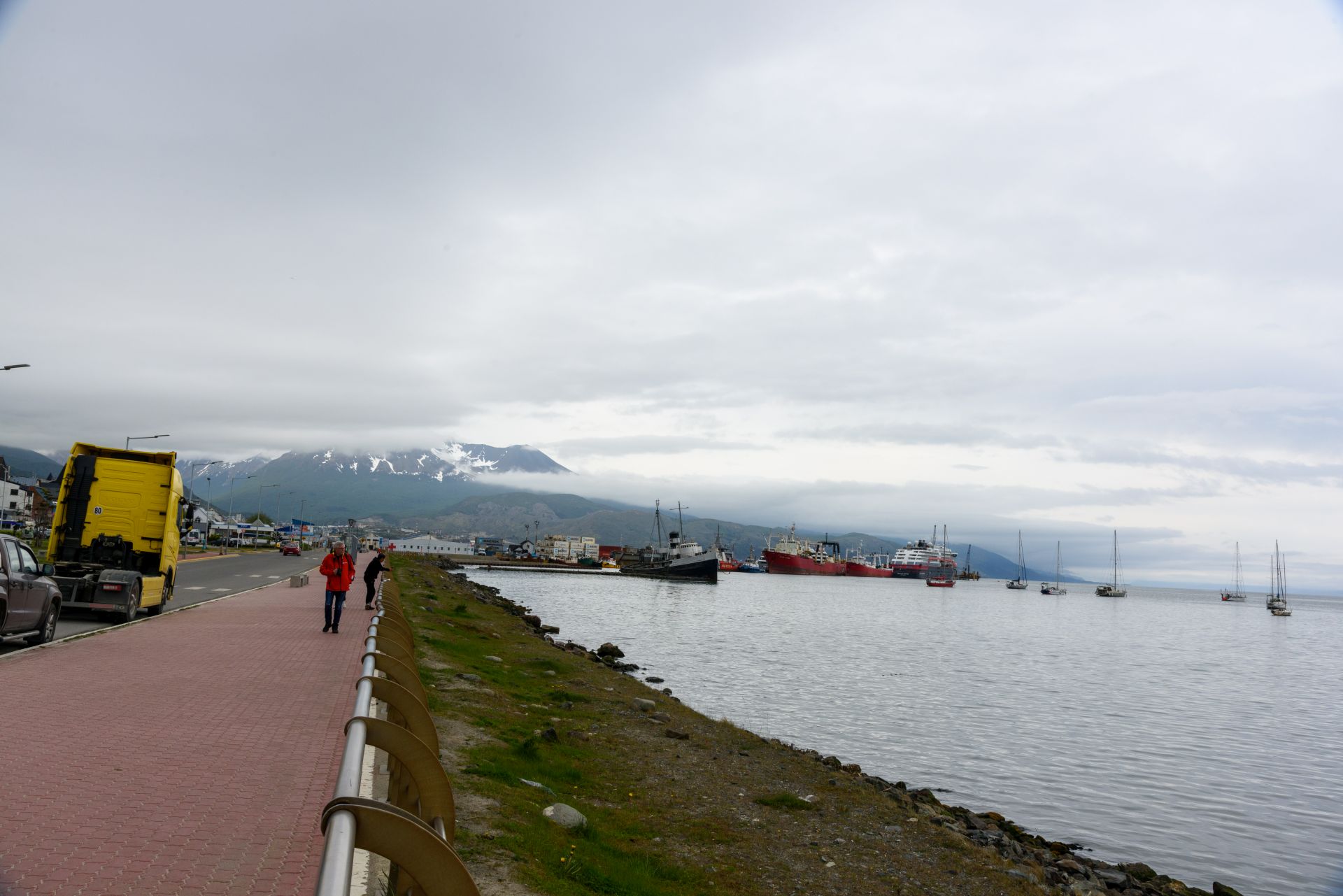
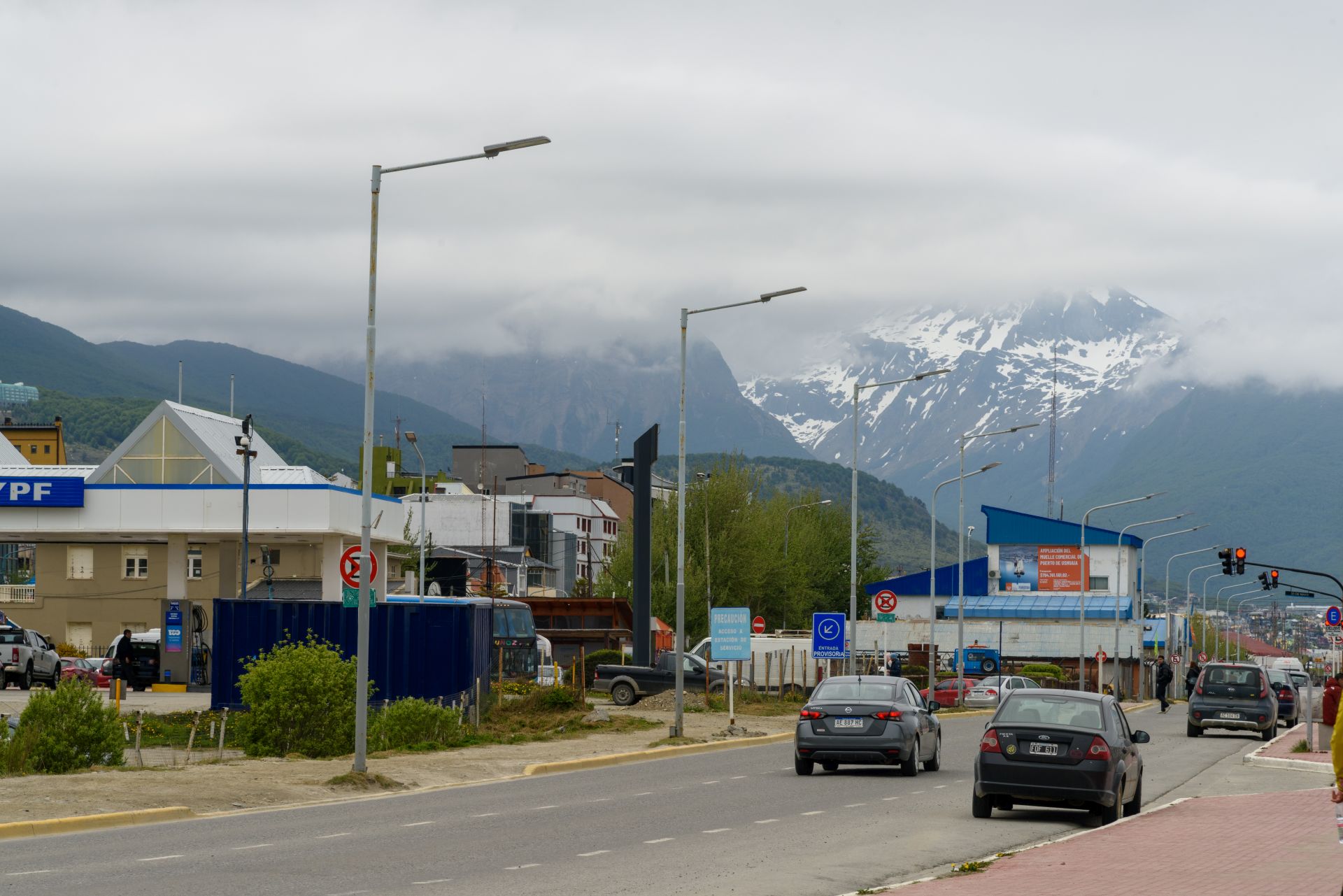
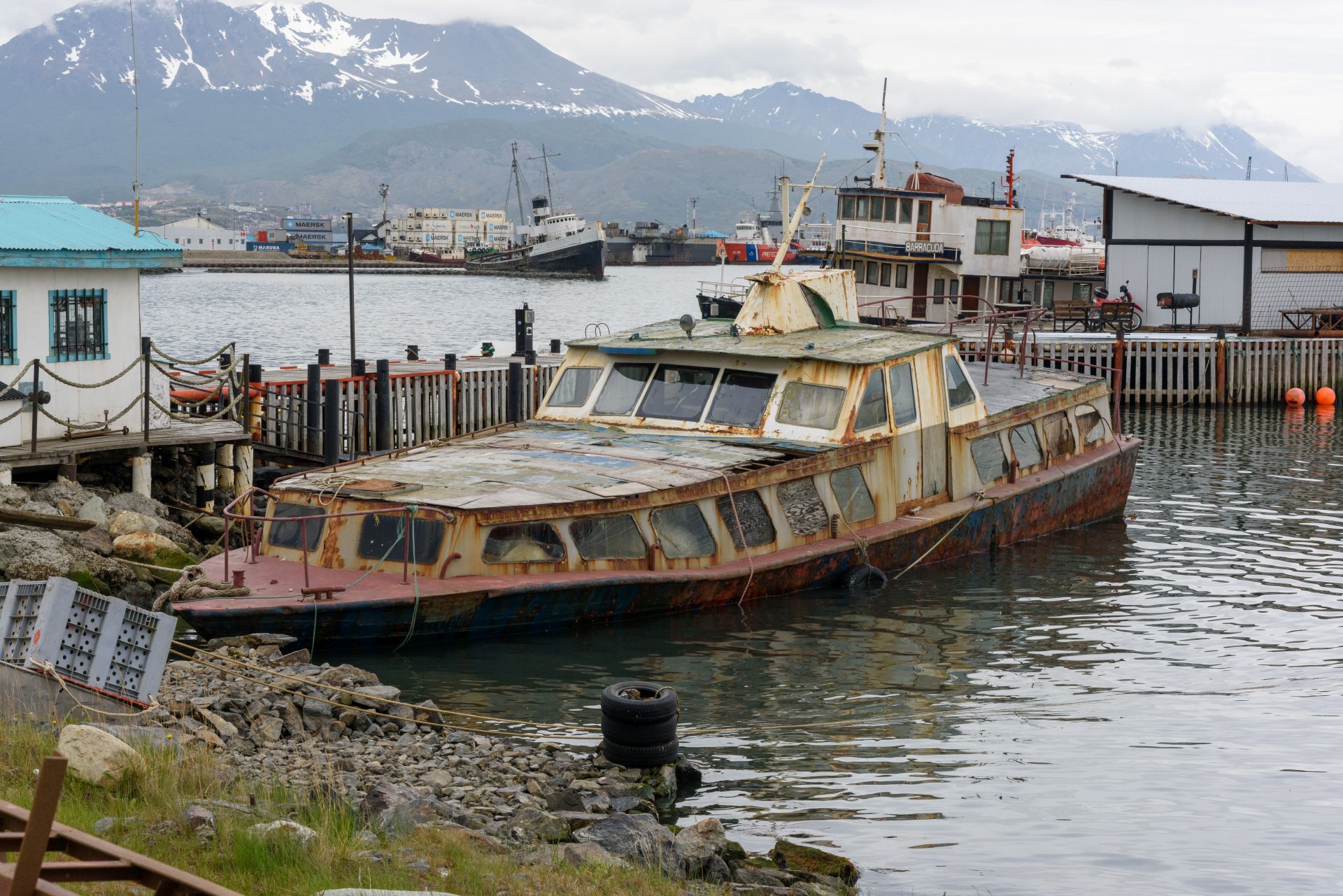
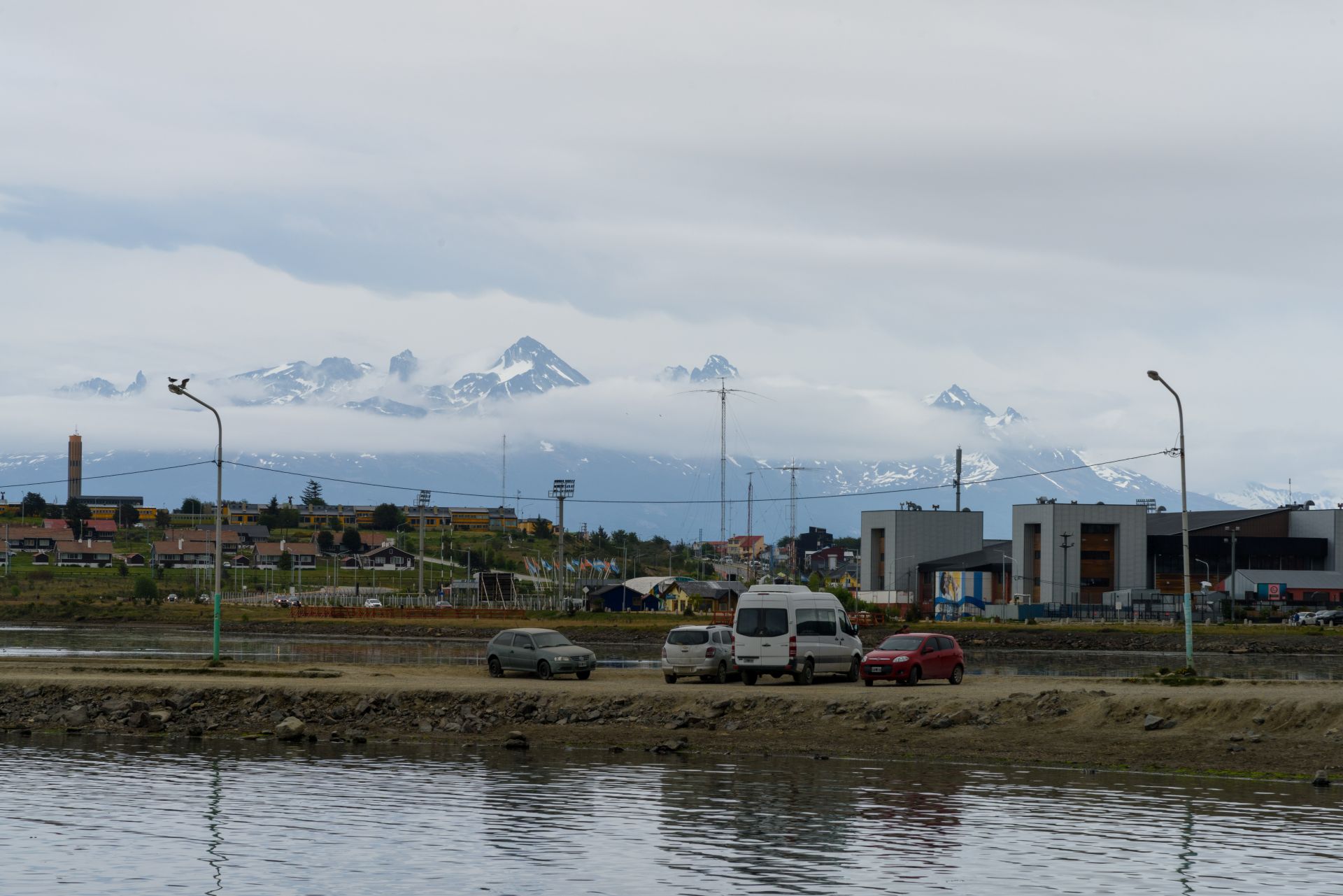
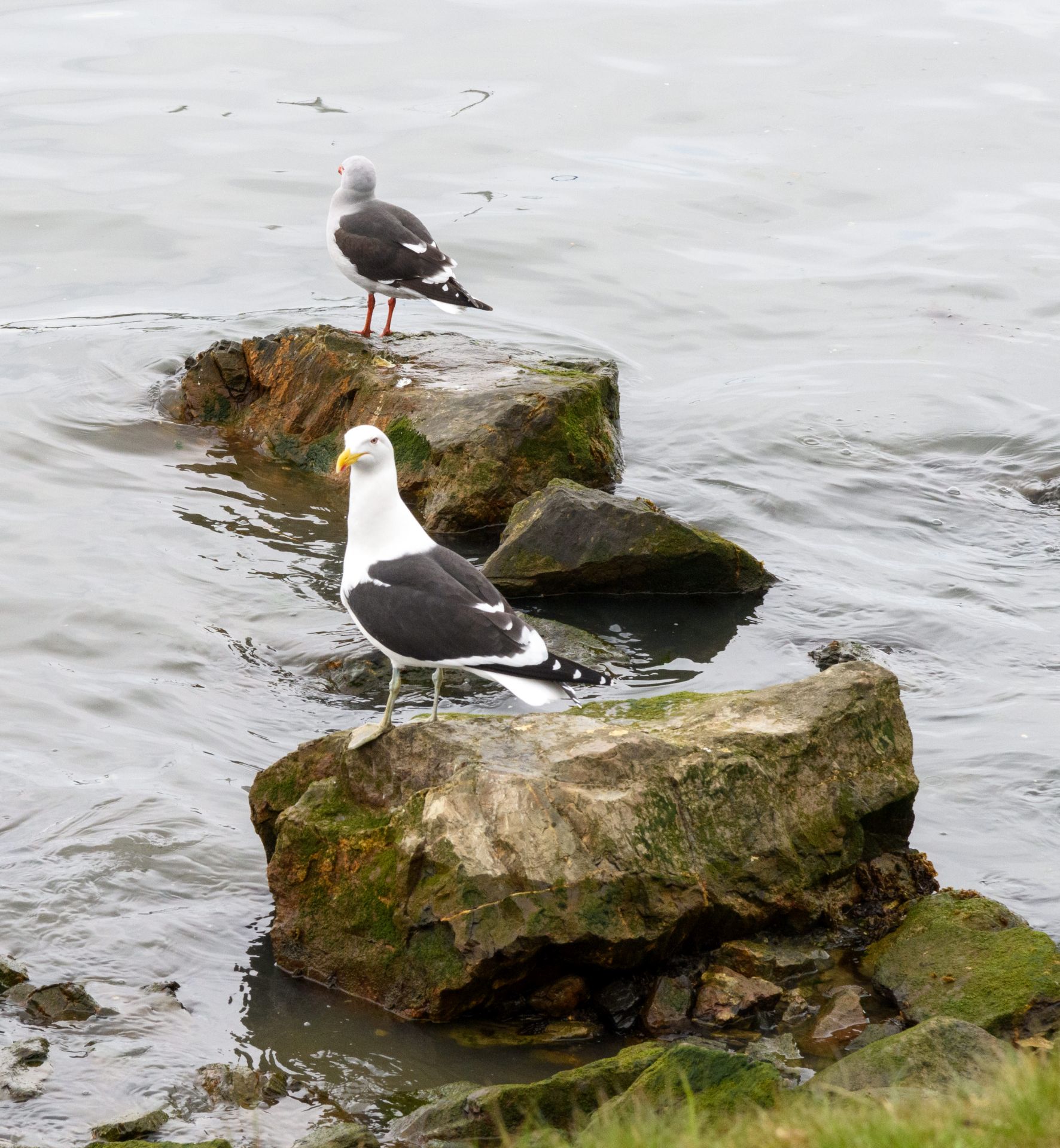
We continued our walk toward the domestic airport. Yep, a town of 100K has two airports! The domestic airport was originally the only airport, but the runway was just short enough that a couple of bigger planes ended up in the bay so a new international airport was built. From there, the group split up as did Tim and Jay.
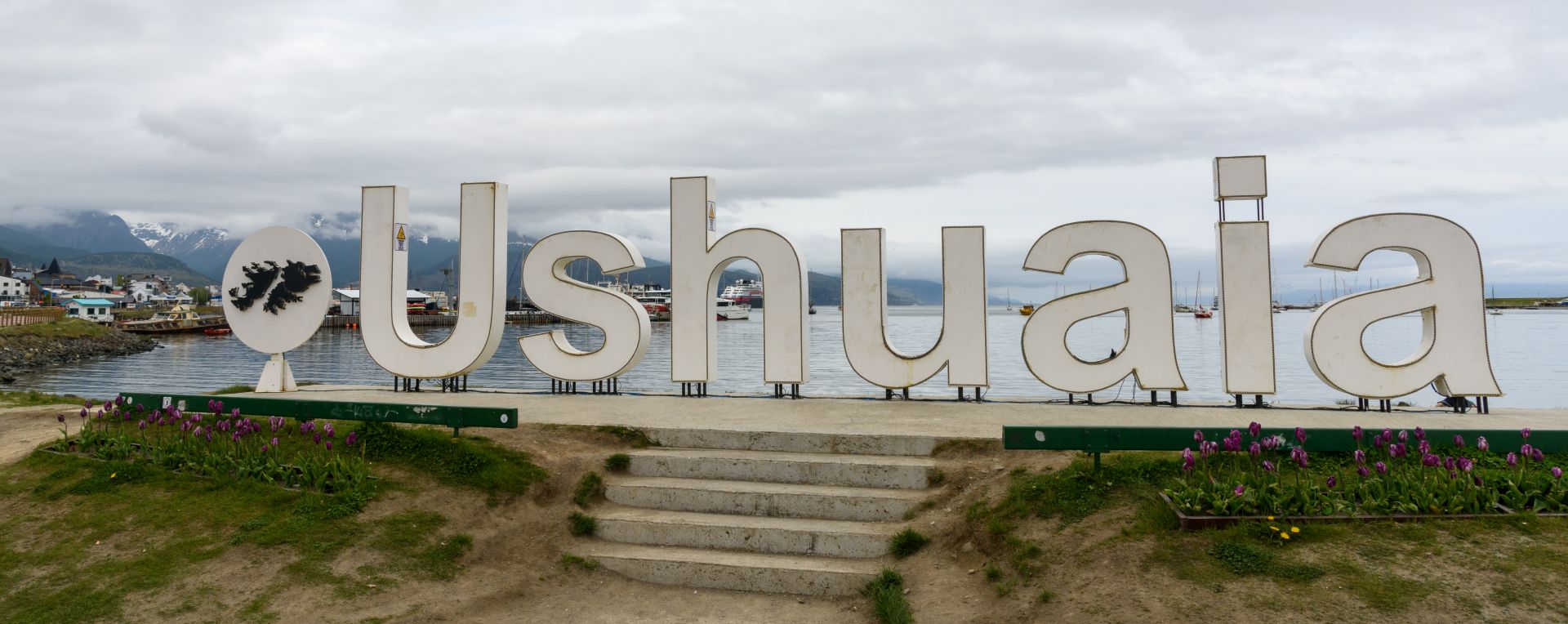
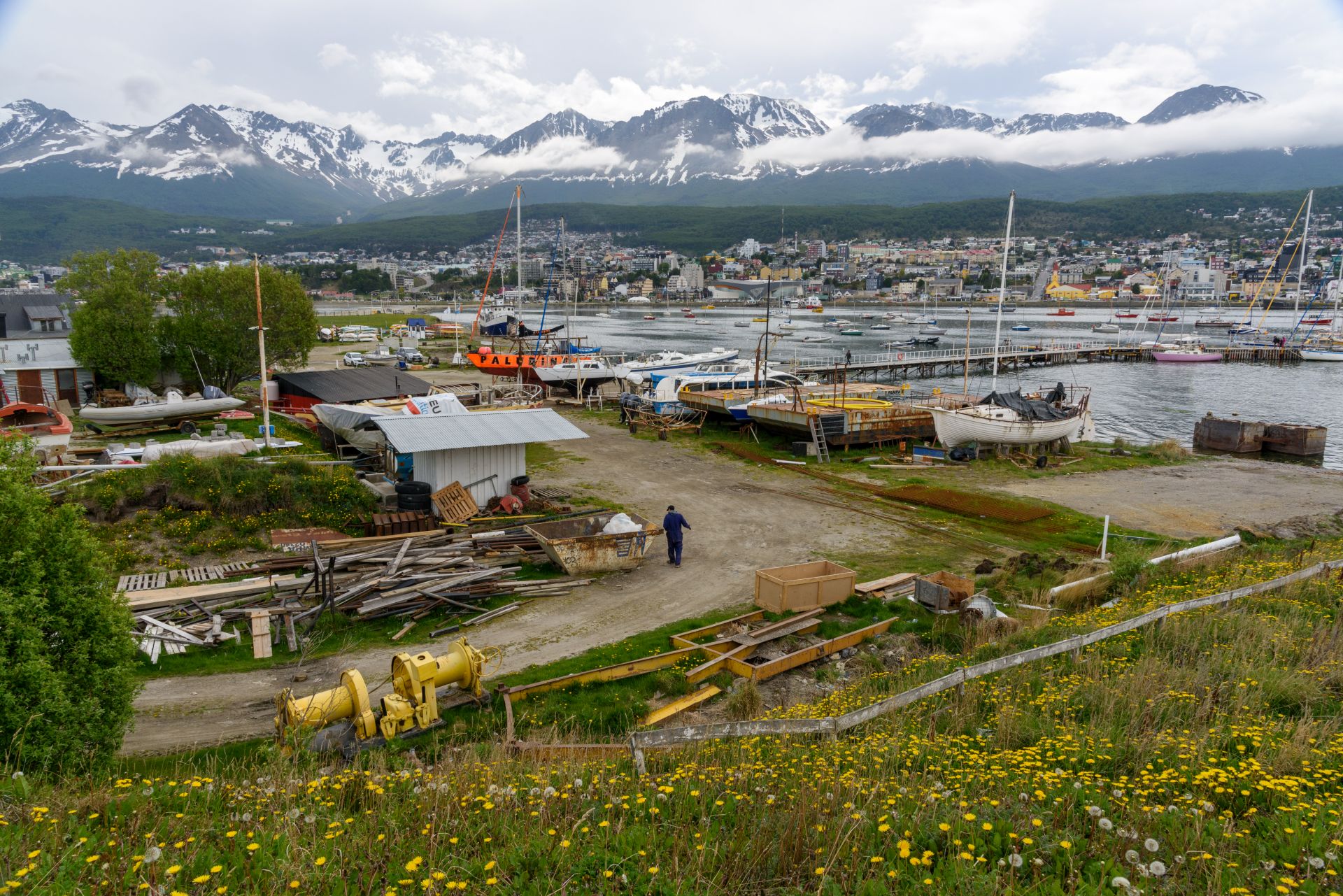
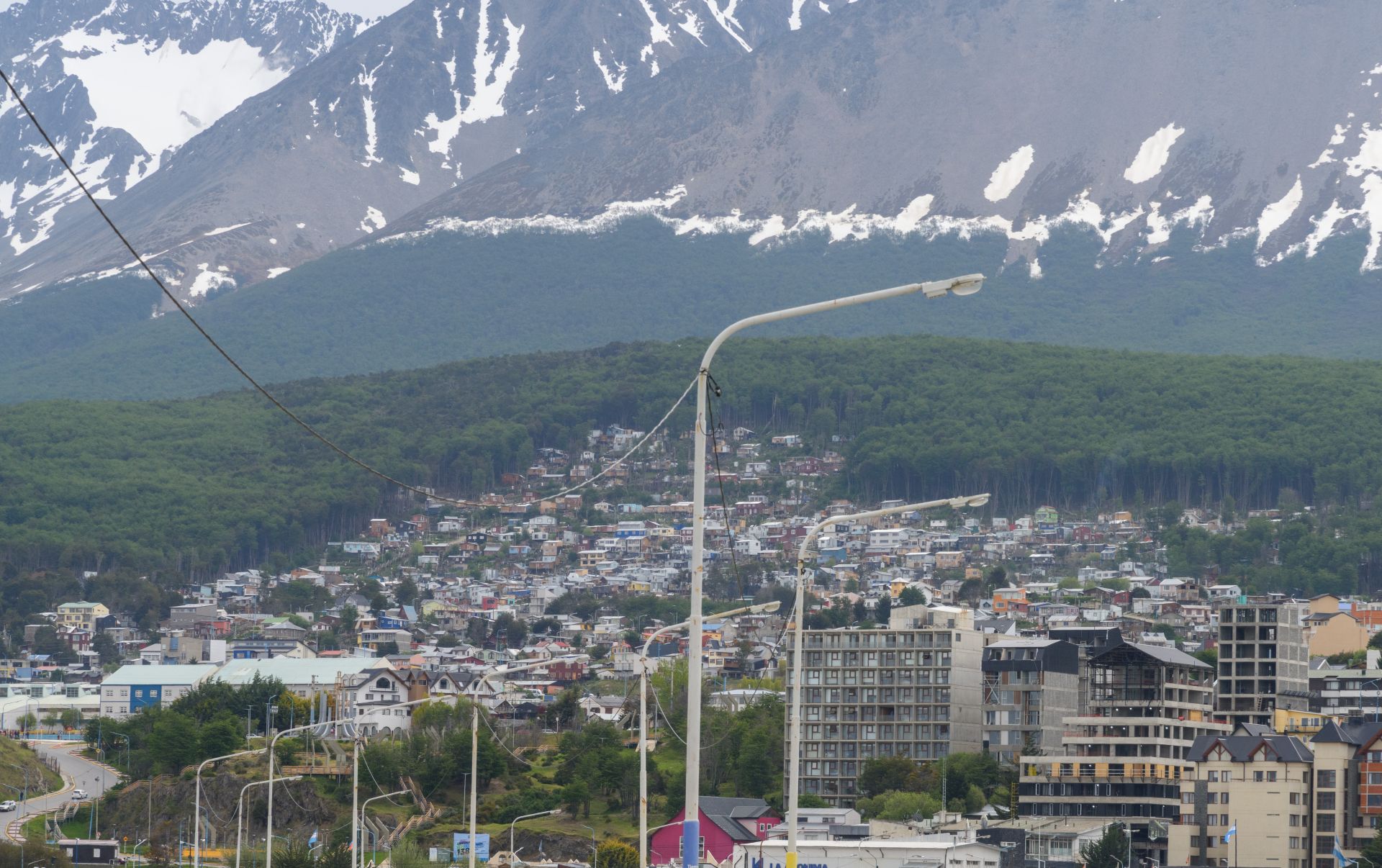
Tim returned to the ship, and Jay decided to continue the walk not realizing how danged long the walk would be! There was a walk around the manmade lagoon, which wasn’t the end of the walk. Then we crossed the road (yep, another road crossing, another dicey run in front of traffic). Then we walked up some stairs. And then there were more stairs.
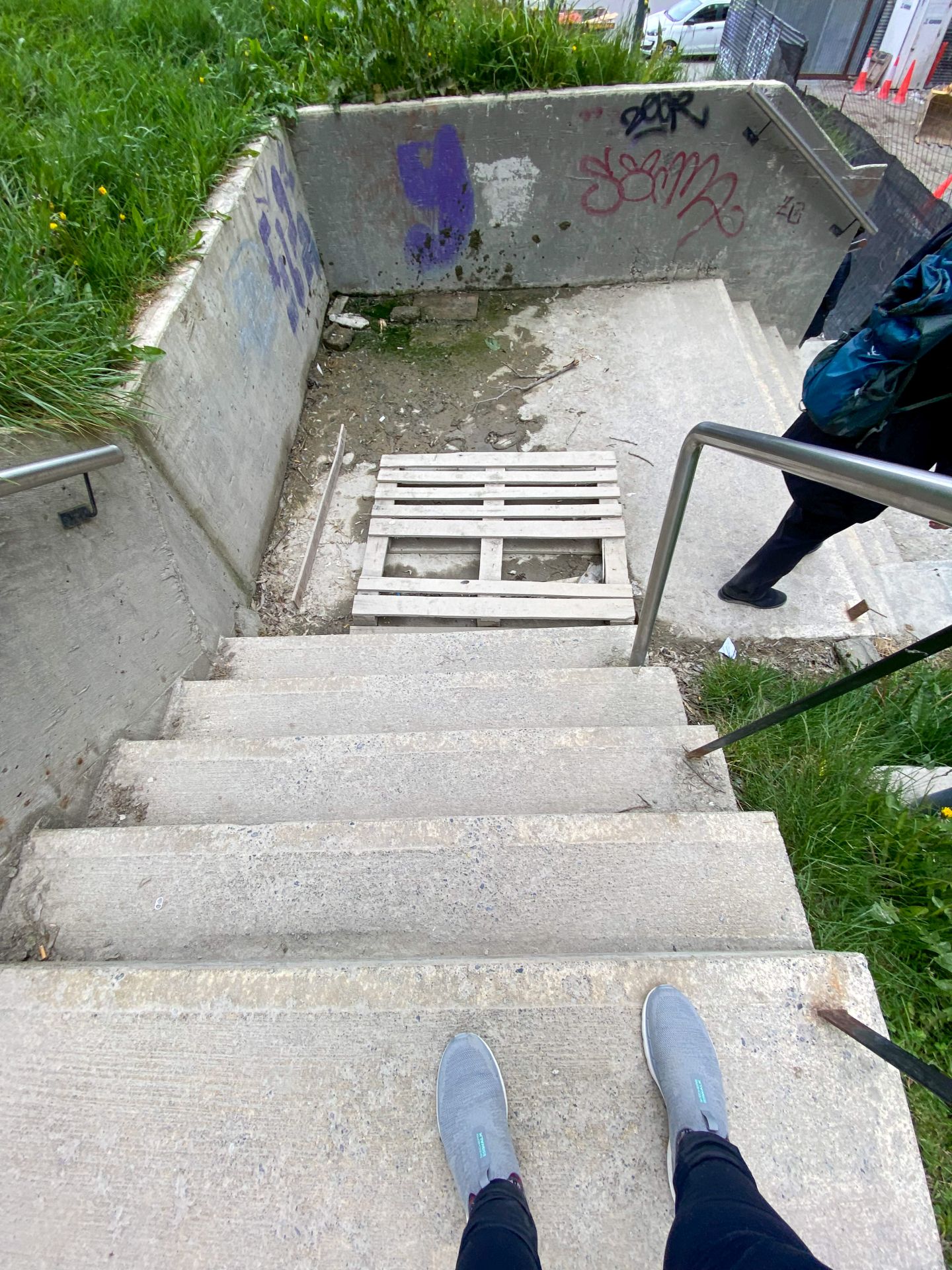
The stairs led to a Centennial Plaza that was built in 1984 to celebrate the 100th anniversary of Ushuaia. The plaza was strangely reflective of something from the Soviet era (austere with a lot of concrete pllars), including a sculpture that was reminiscent of something we saw in Belarus years ago. Pretty sure there was another set of stairs after that.

Our guide officially ended the tour at the supermarket in town, which was on the main road. The town was pretty dead on a Sunday, with the supermarket, one souvenir shop, and a few restaurants being the only open businesses.
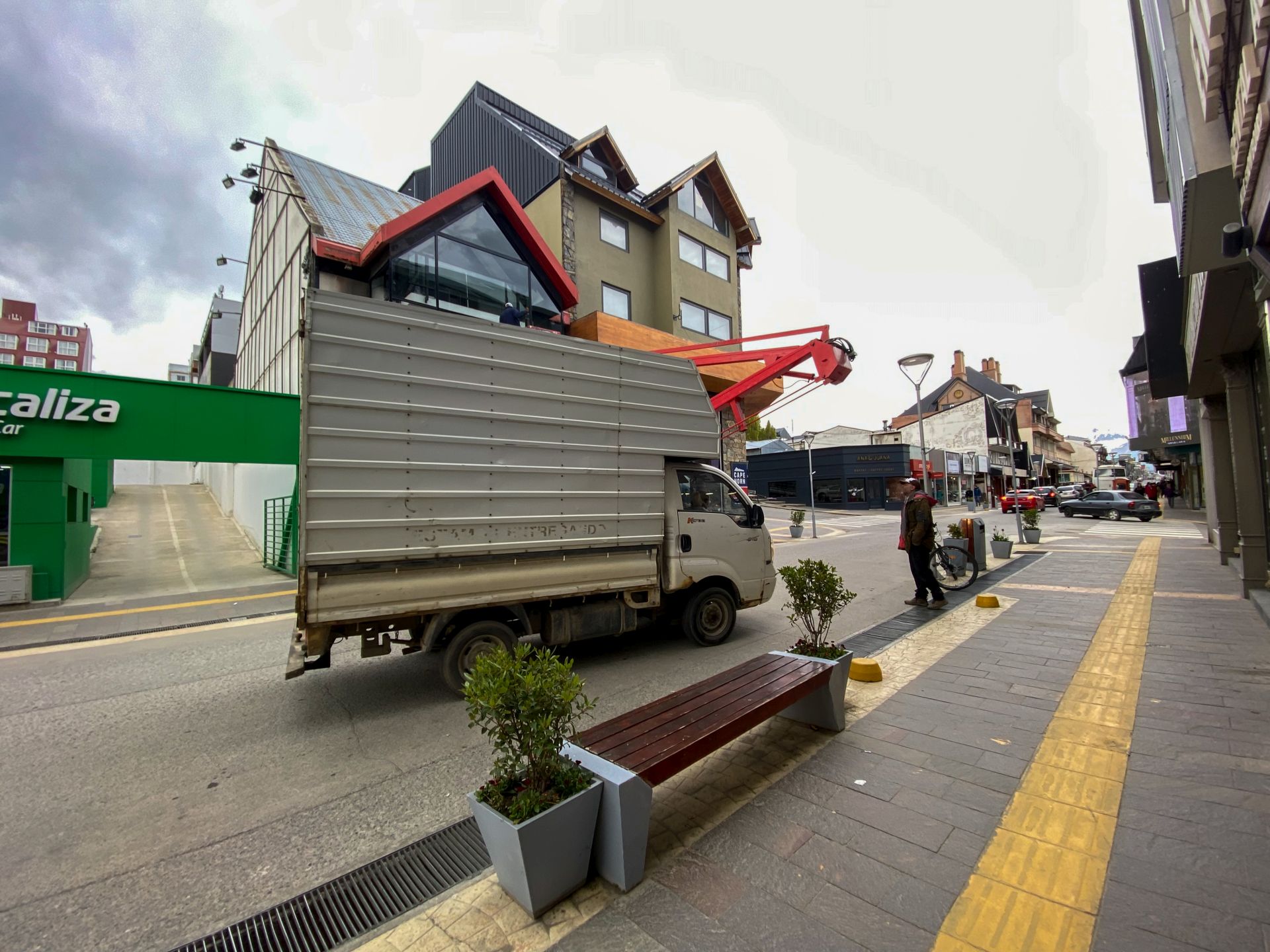
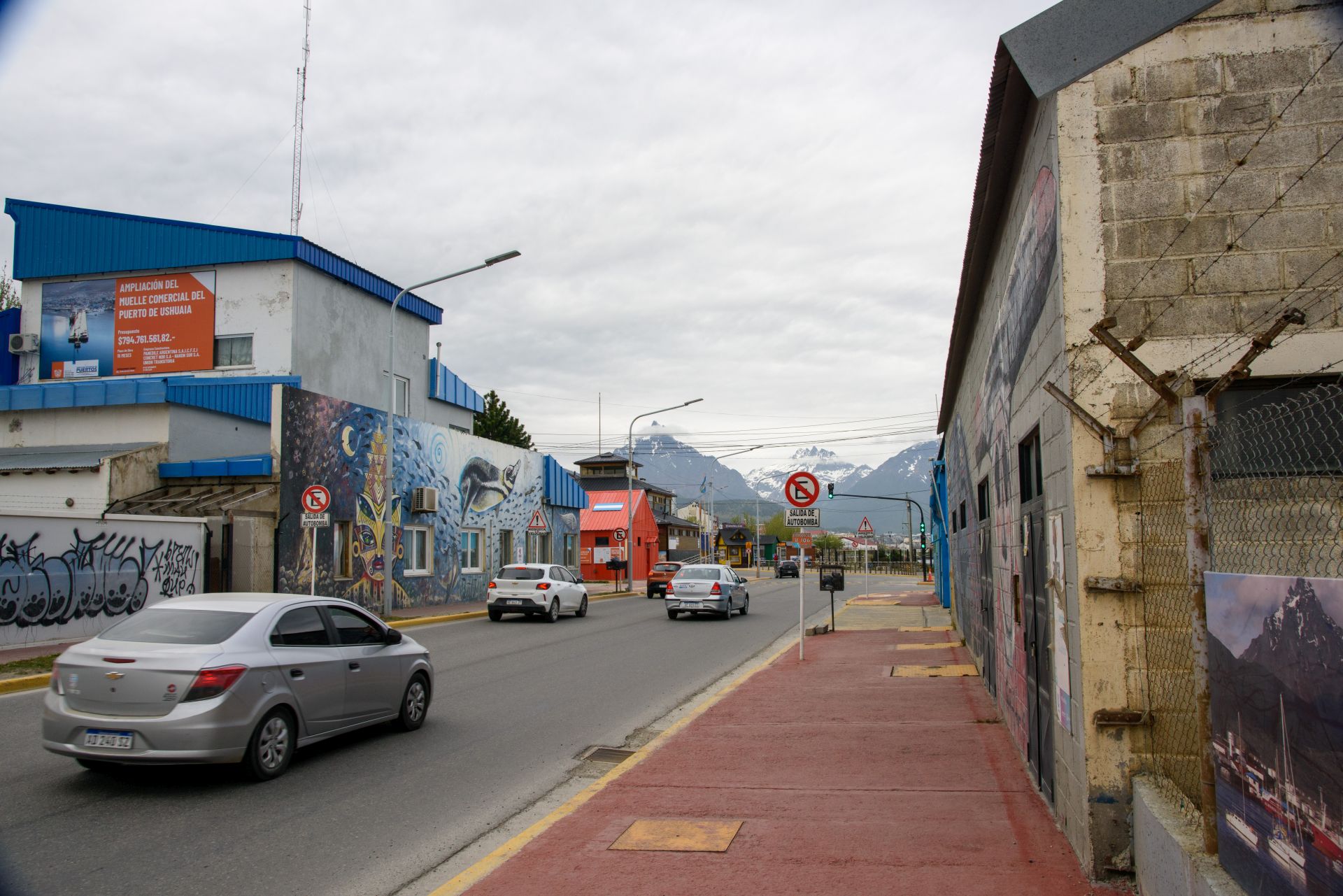
Fortunately, one of our travel mates had spent time in town the prior day so she walked through town with Jay, safely crossing three roads (only one was a sprint!), finally returning to the ship. Per Jay’s Apple watch, she walked over 5 miles that day. The nice ending to the day is that by the time Jay returned to the ship, the clouds had retreated, and all of the nearer mountains were clearly visible. The end of the world is such a beautiful sight!

Leave a reply